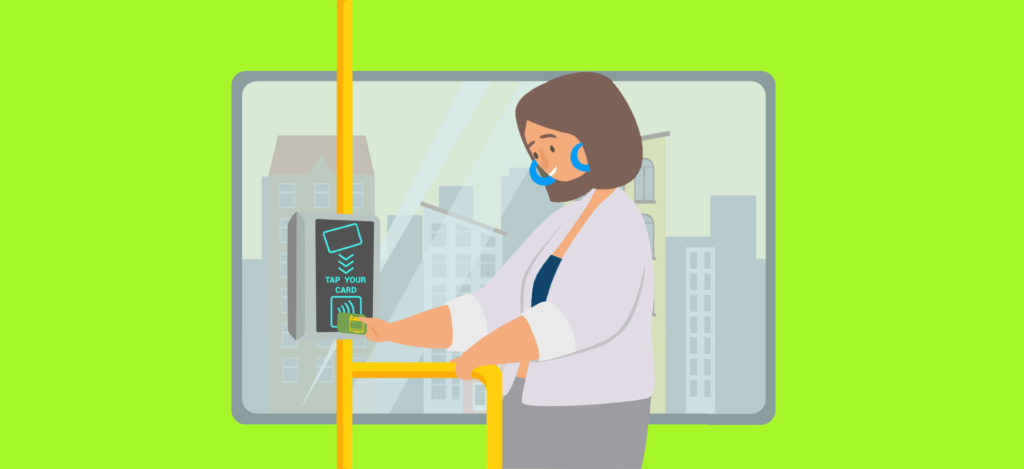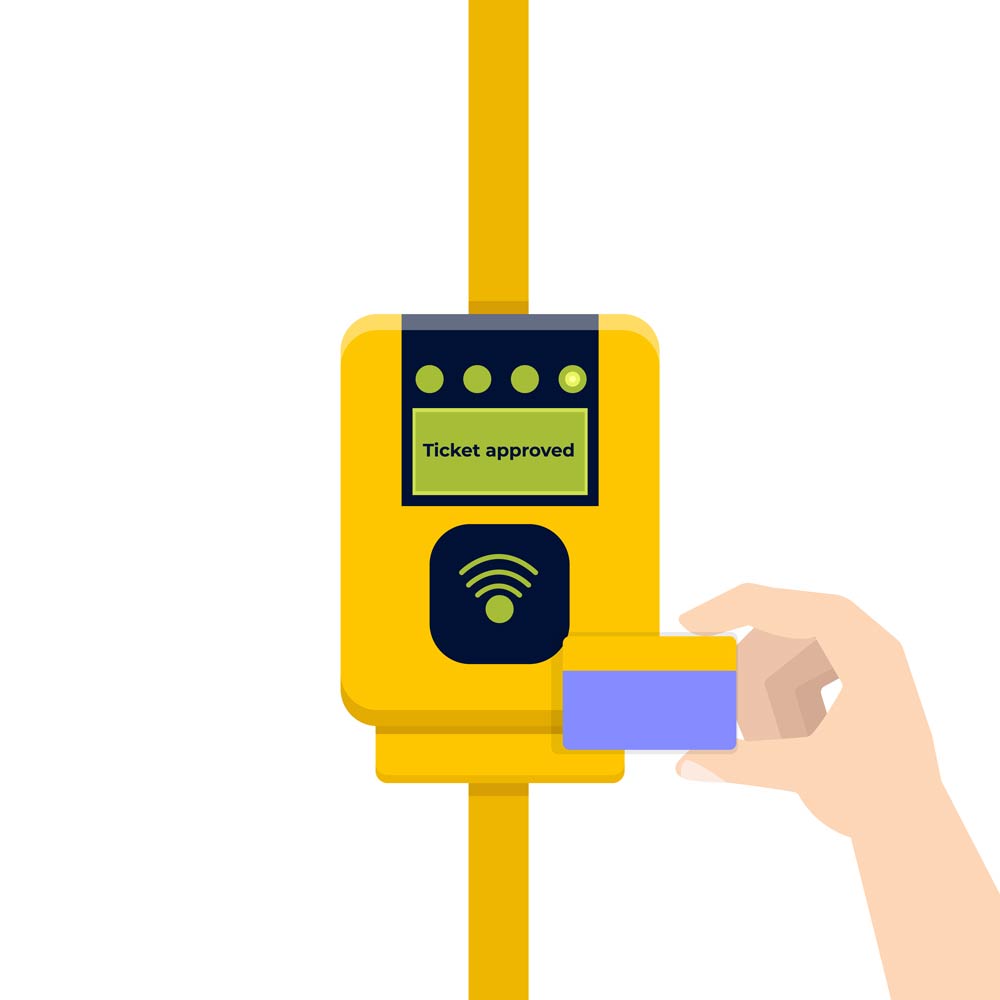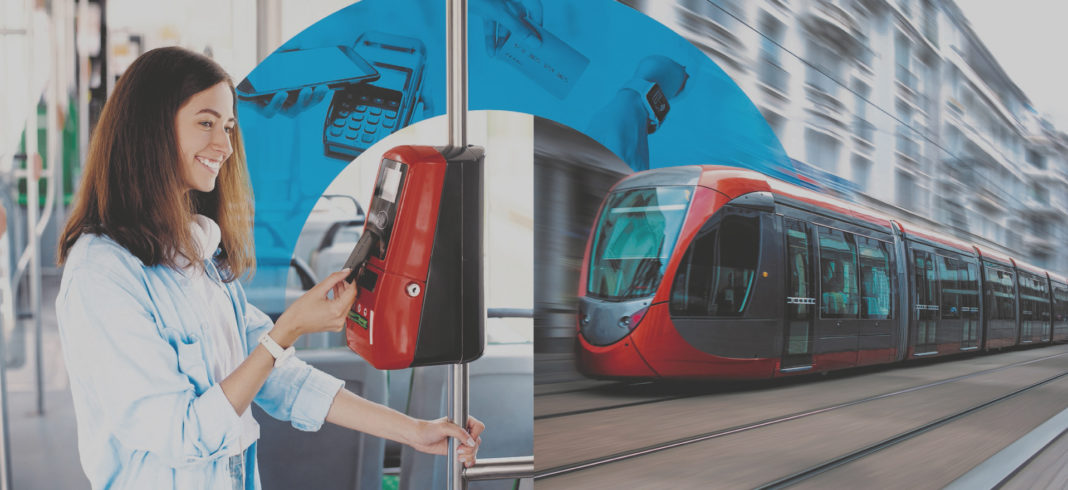In many parts of the world, the future of public transport has already become reality. Cities like London, Tokyo and New York are leading the way: Paper tickets and also the proprietary travel passes of network operators are becoming a thing of the past.
All that passengers will need to carry in future is a credit card or a smartphone. Mass Transit Transaction is the name of the technology that enables passengers to move quickly through ticket barriers and manage payment on the fly, which has clear advantages not just for customers but travel companies too.
Future driven
For more than 150 years, local and long-distance public transport has become an integral part of the infrastructure of almost every country in the world. As early as 1863, the world’s first underground railway started operating in London. However, it took almost another 100 years until public transport experienced a significant upswing in the middle of the 20th century.
Driven by industrialization and numerous technical innovations, increasingly sophisticated subways, trams and also buses create a vital network that connects all parts of city centres with urban areas on the outskirts. Cities such as London, New York, Beijing, Tokyo or Munich would collapse without subways and buses. More and more people depend on these safe, fast and reliable methods of transport.
In order to ensure that the efficiency of the public transport system is maintained in future, many innovations now play out beyond the physical infrastructure , and relate to new styles of payment, in particular electronic ticketing.

New York, London, Tokio
The metropolises of the world are setting standards: Anyone boarding a bus or train in London, New York or Tokyo can swipe their credit card or payment app on their mobile phone over a corresponding sensor in the station or on the bus. Queuing in front of ticket machines is no longer necessary, nor is fumbling for small change. Companies also benefit. They can deploy their staff more efficiently and guarantee their customers the best price without the need to update or amend ticket tariff lists.
In the context of Electronic Ticketing and Mobile Ticketing, the term Mass Transit Transactions is often used. There are basically two different approaches to setting up the infrastructure for electronic ticketing.
What do Closed Loop and Open Loop mean?
The companies process the payments either in a closed loop or an open loop. In a closed loop, passengers pay within a proprietary system. In most cases, they receive credit card-sized smart cards on which they can top-up with money.
The disadvantage of this method is obvious: the amounts remain on the card and can only be used for the intended purpose. In addition, passengers have to top up their cards frequently and operators have to take care of card issuance and ongoing management of payments.

Open Loop for maximum flexibility
In the Open Loop, conversely, passengers simply use their credit or debit cards, their smartphones or other devices with payment functions, such as wearables. There is no need for them to carry yet another card, which they might forget to take with them or lose. All they have to do is tap their card or device on the corresponding sensors. Thanks to Near Field Communication (NFC), this is done on the fly and there is no additional waiting time at ticket machines, which in rush hour can be very busy.
Always the best price – without research
While passengers who use traditional payment methods have to research the cheapest tickets for themselves, the payment system of the Open Loop automates this process. The system captures the station from which the customer starts his journey the second he taps the card on the sensor. At the destination station, he taps the card again on the corresponding sensor and the system calculates the fare.

Pay-as-You-Go
The method behind this system is called Pay-as-You-Go. However, it allows you to go much further. If the customer travels several routes in one day and the total price of the individual tickets exceeds the price of the day ticket, he only pays the lower amount. During processing at the end of the day, the system automatically selects the best option. Similarly, passengers cannot exceed the payment amount of a monthly ticket for one month. This results in an unprecedented gain in convenience and time – not to mention the financial savings potential and the flexibility gained. In addition, special discounts can be granted as part of a loyalty programme, or during a special offer promotion.
It’s not only regular commuters who benefit. Occasional travelers need only to worry about carrying anything more than their usual credit or debit card to take advantage of the lowest price guarantee.
The advantages for customers and transport companies at a glance
Customers
Flexible cost adjustment
Never pay more than necessary. If a time ticket is cheaper for customers than route-based tickets, or vice versa, they always pay the lowest price.
No additional cards
Passengers only need their debit or credit card. Alternatively, they can choose not to use the card at all and pay via their NFC-enabled smartphone using Apple Pay or Google Pay.
No queues in front of ticket machines
Since no more tickets have to be bought, there are fewer queues in front of the machines. Those who use electronic ticketing completely avoid waiting times and do not have to top up proprietary tickets.
Transport companies
Minimal adjustments to the infrastructureder Infrastruktur
Companies do not have to radically change their infrastructure. Physically, they only have to install the sensors and machines for the NFC checkpoints. The effort required to implement the digital infrastructure is relatively low.
Lower operating costs
The operating companies considerably reduce the costs they normally have to spend on cash management and its transport.
Lower investment costs
The purchase and maintenance costs of the ticket vending machines and ticket booths are also reduced.
Improved performance and higher customer satisfaction
No queuing means that passengers enter the stations and vehicles without any friction. This ensures a smooth experience that increases customer satisfaction.
High security
As transport companies do not store passenger information on proprietary cards and handle everything through the credit card, the privacy of passengers is protected in the best possible way. Thanks to security measures such as tokenization, sensitive data remains secret and cannot be stolen.
Payments in Public Transport: the Podcast Episode
Together with Kostika Stralla, Senior Product Manager at Computop, Henning Brandt talks in this episode about the future of payments in public transport.
